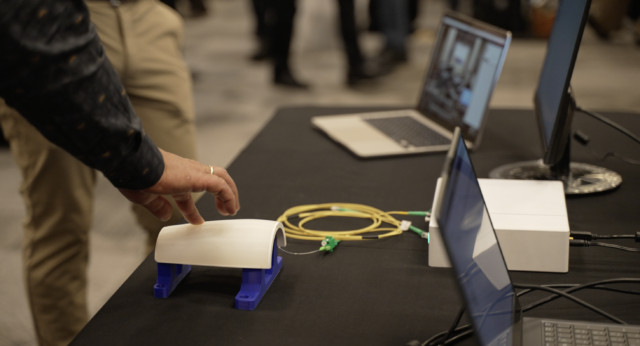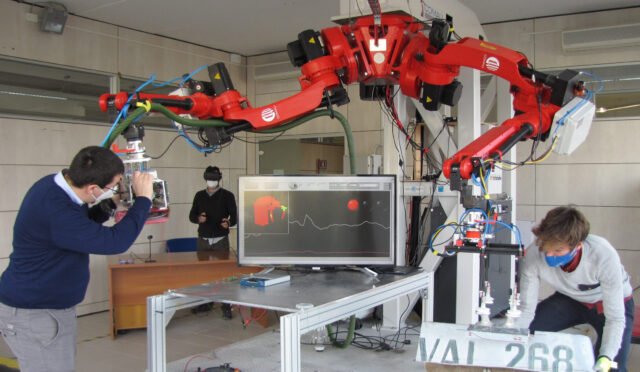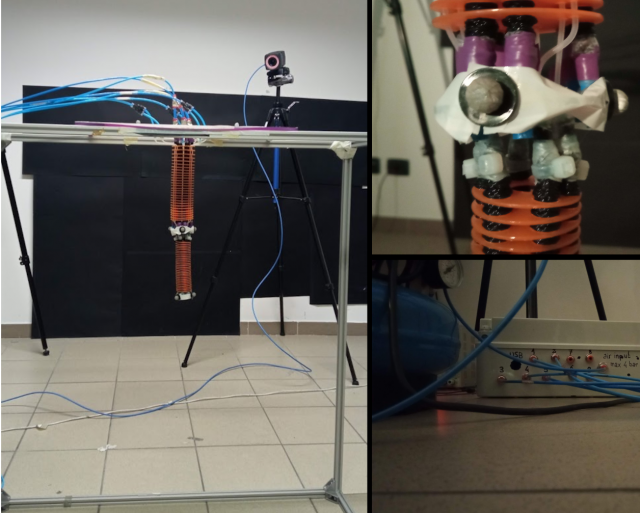HomeRobotic Database - Robotic platform | TERRINet
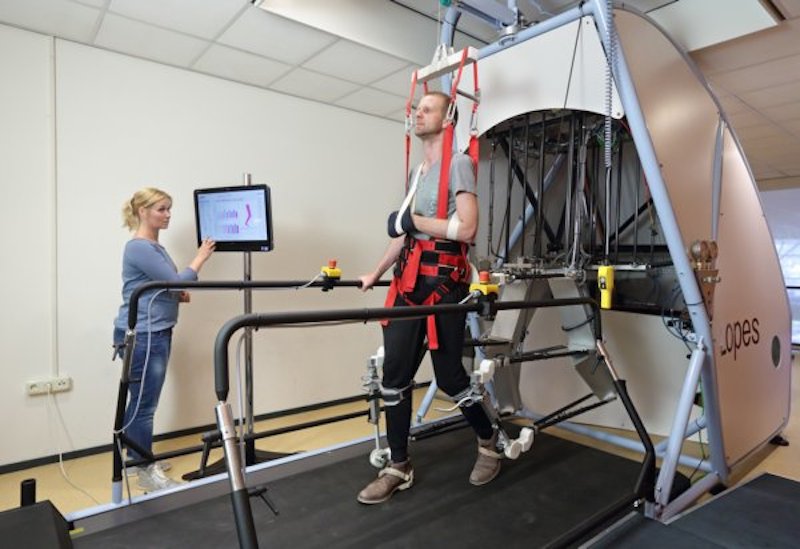
LOPES
The LOPES can be used to assist patients (e.g. stroke, SCI) during walking or assess gait impairments. It has eight powered degrees of freedom (hip flexion/extension, hip abduction/aduction, knee flexion/extension, pelvis forward/backward and pelvis mediolateral). Other degrees of freedom are left free. The robot is attached with a minimal amount of clamps which results in a short donning and doffing time. It is admittance controlled and allows for control over the complete spectrum from low to high impedance. Kinematics and interaction forces are measured by the device and it can be easily combined with EMG measurements. It allows to test new controllers (e.g. for exoskeletons) or assessment algorithms in a safe environment.
Key features:
- Short donning and doffing time
- 8 powered degrees of freedom
- Integrated sensors to measure kinematics and interaction forces
- Admittance controlled: control from low to high impedance possible
- Simulink development library, allowing easy integration of new control algorithms
Possible applications:
- Controller development for exoskeletons
- Human-Robot Interaction
- Gait assessment
- Gait training
- Human-in-the-loop testing
Technical specifications
| Maximal Torque (varying per joint): | 60-66 Nm |
| Control: | Admittance control |
| Other free degrees of freedom: | 9 |
| Powered degrees of freedom: | 8 |
| Donning time: | 5-15 minutes |
| Maximal rendered stiffness: | 1500 Nm/rad |
Access information
| Corresponding infrastructure | University of Twente Department of Robotics |
| Location | Hallenweg 15, |
| Unit of access | Working day |
Access history
FlowWalk - Velocity-field-based Assist As Needed control in LOPES II
Hocoma AG (Jan Veneman, Technical Project Lead)
The goal of this experiment was to evaluate a recently published control scheme that was developed for interactive “assist-as-needed” control in an autonomous exoskeleton, in the context of a treadmill based (stationary, non-autonomous) gait trainer (LOPES II).
The principles of this controller are explained in a publication, and the Matlab code was kindly provided by the authors for further evaluation
In the experiment the goal was to check whether the algorithm would be perceived as natural, intuitive support to a healthy gait pattern, and would increase support when the healthy test subject would reduce their effort.
-
- Martínez, A., Lawson, B., Durrough, C., & Goldfarb, M. (2018). A Velocity-FieldBased Controller for Assisting Leg Movement During Walking With a Bilateral Hip and Knee Lower Limb Exoskeleton. IEEE Transactions on Robotics.
The indicated control scheme could potentially be interesting to be implemented on the Hocoma Lokomat®, however substantial hardware changes need to be implemented on this device in order to facilitate this. To evaluate whether the flow field-based control principle is simple to implement and feels intuitive to an (initially) healthy user, when implemented on a stationary gait trainer (like LOPES II or Hocoma Lokomat®) instead of on an autonomous exoskeleton (like Parker Indego, used in the study), would be informative to Hocoma in order to decide whether it is worth to make hardware improvements to the Lokomat® to facilitate such a type of control. Once implemented in a commercial device, this work could facilitate larger clinical studies into clinical effectiveness of such Assist As Needed training approaches to recovery of gait in neurological patients. In general, it facilitates further improvement of gait rehabilitation using robotic devices.
Additional information
The design and control of LOPES is described in detail in the PhD thesis of Jos Meuleman http://josmeuleman.nl/thesis.html
Information on LOPES related project can be found at https://www.utwente.nl/en/et/be/research/projects/lopes




